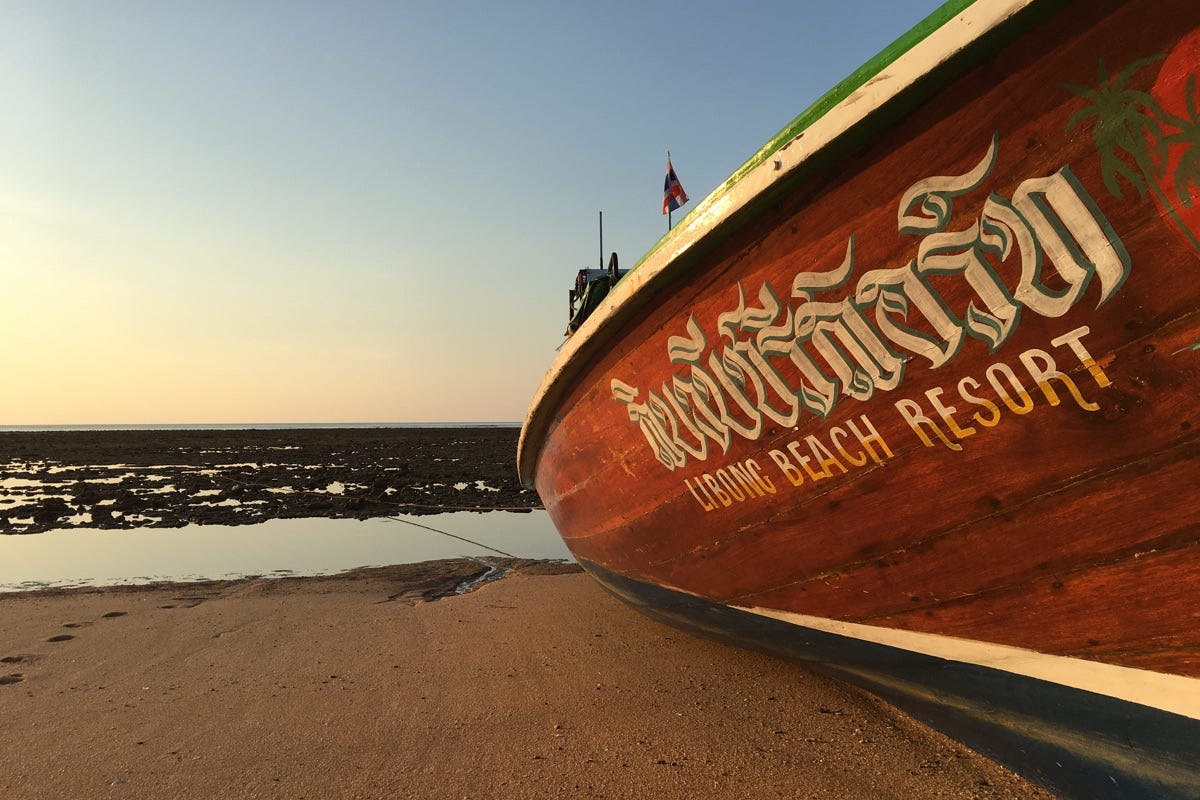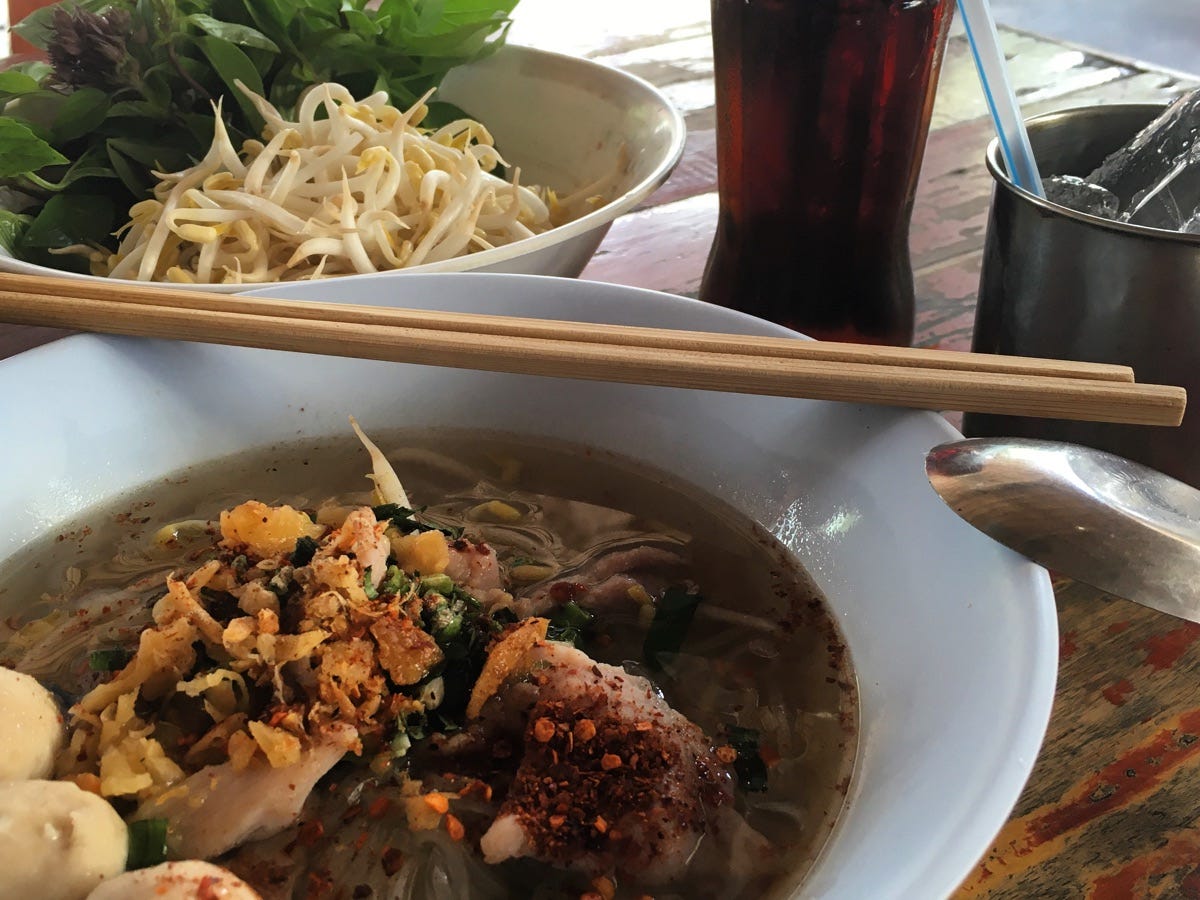One of the most oft-cited upsides of travel is the financial benefit it can bring to destinations. It can assist in raising living standards, covering school bills or putting food on the table. You putting your money in local hands matters and it can make a difference.
Indeed, for many nations in Southeast Asia, inbound tourism is a significant source of income. How significant? This World Travel & Tourism Council report (PDF) indicates that pre-pandemic (2019) travel and tourism was responsible for over 10% of GDP. International spending was responsible for over half of that, and leisure travel over 75%. Tourism matters.
When it comes to dosh, tourism matters. Source: World Travel & Tourism Council.
There’s plenty of different ways to spend your money though. As far as I can tell, the above figures don’t take into account how much of your spending will beat you to the departure gate in its rush to leave the country. This also matters.
This is what the travel industry refers to as “leakages”—money you spend in-country that doesn’t stay there. Writes UK tour operator Not In The Guidebooks:
“From profits distributed to foreign companies (like airlines or resorts), to foreign imports to meet tourism demand, the actual amount of money that ends up where you think you’re spending it can vary wildly.”
To better explain what this means in real life, consider the following example.
You spend $5,000 on a holiday to Thailand. $1,000 is on your airfare, which is with a foreign-owned carrier. Some subset to that $1,000 will stay in destination through arrival taxes, airport landing fees and so on. The majority though goes to the parent company, so may not stay in-country.
“My brother did it.” Leaky boat on sandbar off Labuan Pandan, Lombok. Photo: Stuart McDonald.
With your remaining $4,000 you book yourself ten nights in a glorious beach resort at $200 per night. The resort though, is part of a foreign-owned or managed chain, so as with the airline, some of your money gets offshored. Yes, a portion of the $2,000 will stay local through staff salaries, food and whatever, but not all will.
The remaining $2,000 you spend two ways. First, one has to eat and drink, so half goes there. Those imported spirits, wine, cheese and Vegemite all have leakages local fare doesn’t. The other half you spent on a week-long trekking adventure that you purchased before leaving home. Anything from 60% of money put into inbound operators can get offshored.
So, of that $10,000 you spent—depending on how much you like your Jack Daniels with a Vegemite chaser—a not insignificant amount leaks. It is hard to say what percentage leaks out as this isn’t information businesses brag about. One thing is clear though, if you stay and patronise local-owned businesses, your travel boat is less leaky.
Local-owned means less leaky—in this case, thankfully as we took a trip in this boat the next day. Photo: Stuart McDonald.
I’m not saying leakages are bad by default. Airlines have loads of local hires and airports likewise hire a tonne of people. Luxury hotels and tour operators also hire a bunch, and someone has to carry all those crates of JD and Vegemite right? Some proportion of your spend will stay local—and that is good, or rather, it is better than nothing. What I am saying, is if responsible travel matters to you, it is a good idea to keep in mind where your money is going.
Let’s jump back in time a bit—to Laos.
In 2002, a report for the International Labour Organisation (PDF) noted the growth in small enterprises following the nation’s economic liberalisation. Of almost 150,000 small businesses, 90% were family businesses and 63% were female-owned. These were not all tourism-related of course, but many were. A report five years later, on Lao tourism and poverty alleviation noted (the report is paywalled, but if you’re interested in Laos, it is a super-interesting read—so let me know if you’d like me to email you a copy):
“... in all of Lao PDR’s main tourism centres, in the accommodation sector (and in restaurants), small/micro businesses are the norm.”
With this in mind, it doesn’t feel like a stretch to suggest the following: If you spend your money in a small tourism business in Laos, chances are it will be a family- and/or female-owned one. This is good—and it is in line with some of the smarter ethos behind responsible travel.
Going local and less leaky might mean a few more bumps—and adventures. Our broken-down boat, Togean Islands, Sulawesi. Kids were not bothered. Photo: Stuart McDonald.
Figuring out who owns what is a fraught undertaking. Throw your mind back to the tourism boycott of Burma. At the time, people who still visited said they were careful to keep their money away from the junta’s clutches, but it was complicated. There were easy things to avoid—the train system, airlines and so on, but trying to find out who owns your hotel? Hard. Who owns the brewery or the rice wholesaler? Hard again. At the end of the day, most went with the low-hanging fruit.
To be clear, I’m not putting foreign-owned businesses on the same table as a murderous junta! The challenges though, of determining who owns what, are somewhat similar. This challenge isn’t helped by companies who muddy the waters.
Take adventure company G Adventures who run tours in Southeast Asia (among other places). I was going to say they were a Canadian company, but their terms say they’re a Barbados one—who knew? Anyway I digress. G Adventures promote what they call a “Ripple Score.” A score out of 100, it purports to show how much of the money from G Adventure’s “local expenses” stays in country. Given the difficulty in determining where a guests’ money goes, this seems like a good idea. It isn’t though, quite so simple.
Yeah, but is any of this true? Boat timetable, Ampana, Sulawesi. Photo: Stuart McDonald.
G Adventures claims that 100% of their spend on “local expenses” on for example, this Vietnam trip, goes to “local businesses”. Great! Read the small print though and the waters turn as muddy as the Mekong. To qualify as a “local business” G Adventures writes:
“To qualify as a local business or service, 50% or more must be owned by a legal resident or national citizen of the country where it operates.”
This means a business could have a resident foreigner and a foreign partner as the two owners and yet qualify as local. To my mind, this doesn’t, in any way shape or form, equate to local-owned. I asked G Adventures about this by email, but after being strung along for a few weeks I gave up ever receiving answers. By the way, don’t worry about any flying you do on a G Adventures trip causing ripples. Flying doesn’t count towards the score’s calculation.
They could fix this by removing the “legal resident or” bit. That would then guarantee that the businesses they use are at least 50% owned by a local. Better than nothing right? I wonder why they have phrased it as they have.
“Sounds a bit iffy to me.” Porter, Gunung Ijen, East Java. Photo: Stuart McDonald.
G Adventures’ Ripple Score is especially problematic when viewed through a marketing prism. Early in this Low Season Traveller podcast, Tuan Pham talks about leakages and tour companies. Pham is one of the co-founders of Travel Neutral, a company which claims to be a leading DMC in Vietnam, so there is an angle at play, but still, he is well worth listening to. Talking about inbound tour companies, Pham says:
“... probably up to 60 70 80% of the money that you spend goes back to the company owners, with very little staying in the country.”
This isn’t only a concern held by Pham. Miquel Àngel of MQL Sustainable Tourism Services is a tourist professional with over 25 years experience in Vietnam. In an exchange by email, he mentions—in a conversation related to an upcoming story—the high-end boat tours in Vietnam’s Mekong Delta:
“Consider the seven-night Mekong by luxury boat trips—these can command huge prices, but create close to zero benefit for local areas and people—and much of the revenue leaves Vietnam.”
Imagine a tour operator leading their tour page with “Our tours create close to zero benefit for local areas and people.” Sign me up! When operators put their finger on the scale, and extoll in their marketing that 100% of their spend goes to local businesses, it merits a very critical eye. Of course, if it is true, that’s great, and it belongs in the PR push—but is it? As I’ve written before on tour companies, their walk needs to match their talk.
Think before using. Photo: Stuart McDonald.
So what is the traveller who cares about where their money goes to do?
I want to note, this isn’t black and white stuff. Plenty of foreign-owned places have owners who’ve been resident for decades. Owners who do all sorts of great stuff and are community minded. Owners who deserve your encouragement and business. I’m not advocating for boycotting part- or fully-owned foreign businesses. Hell, my company, Travelfish, is an Australian company with no local-ownership. What I am suggesting, is it is important to be mindful of where your money is going. Mix it up.
For anyone not on a tour, and aside from flights, hotels will be the largest expense for most. This is where your money’s impact carries the heaviest sway. If you don’t know if a place is local-owned, email them before you book and ask. While you’re at it, tell them why you’re asking.
Skip the nouveau cuisine Pacific Rim Sustainable Tasmanian Antelope. Photo: Stuart McDonald.
For every foreign-owned hotel you do use, try two local-owned ones. Eat at local restaurants more than you may have otherwise. Skip the nouveau cuisine Pacific Rim Sustainable Tasmanian Antelope restaurant you read about in Travel & Leisure, and try a Thai street-side eatery. Skip the overpriced martini at a god-awful beach club for a feet-in-the-sand cold drink by a local-owned shack-in-the-shade. Rather than booking a tour overseas, organise short tours piecemeal—with local operators. Use local guides. When you’re shopping for gifts or keepsakes, support local producers—ask vendors where they source their goods. Take my word for it, plenty of the “souvenirs” for sale on South Bali streets came out of factories nowhere near Bali.
Each of these steps can bring you closer to local people. Sure these are still all transactional in nature, but every touch point is one that can lead to something more—both for them and you. And that is what travel is all about.
Other episodes in the Rethinking Tourism series:
National Chocolate Milk Day (World Tourism Day)
Nice Tourism (Sustainable Tourism)
The Benevolent Lie (Responsible Tourism)
The Year Is 2006. The Town Is Luang Prabang (Pro-poor Tourism)
Zoom in to the Red Plastic Chairs (Slow Travel)
The Petro-bourgeoisie (Flying, carbon etcetera)
Reality Check (Tour companies)
Follow the Money (Money matters)
Foundations Matter (Community Based Tourism)
Couchfish is 100 per cent independent and reader-supported. If you’re not already a subscriber, and you’d like to show your support, become a paying subscriber today for just US$7 per month—you can find out more about Couchfish here—or simply share this story with a friend.
Don’t forget, you can find the free podcasts on Apple, Pocket Casts and Spotify as well as right here on Couchfish.


















